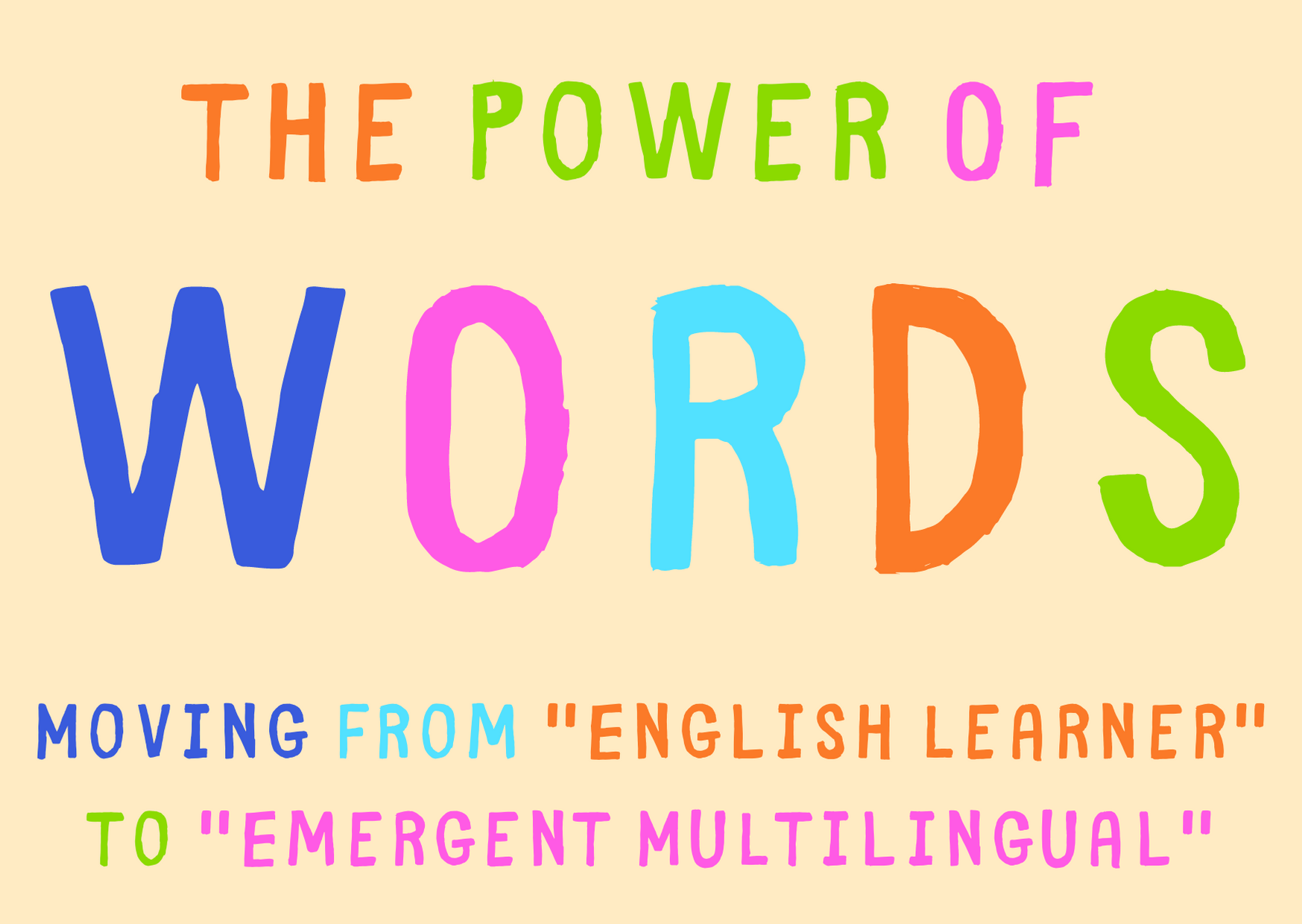The Power of Words: Shifting from “English Learner” to “Emergent Multilingual”
Language is powerful.
When, as educators, our life’s work has everything to do with the vocabulary of our craft, words carry even more weight and significance.
Here’s our vocabulary for today: English Language Learner.
The descriptor “English Language Learner” (or “ELL”) has existed in our academic world for years without much thought. That’s beginning to change.
The last months have opened doors for necessary (if sometimes uncomfortable) conversations about the language we place on our children. In piecemeal, we’re identifying areas where we can grow in affirming students’ inherent worth and promise.
This brings us to our target terminology. We’re long overdue for a makeover in the way that we use words to label, define, and describe the language learner.
Early on in my career as a Newcomer teacher (some 15 years ago), students’ cultural and linguistic diversity wasn’t viewed from an asset lens- at least not in the broader sense that it is now.
You didn’t often hear, “Wow- that’s so cool that you can speak another language and navigate another culture!” in the hallways. Instead, “ELL” was a tag that indicated a liability. It signaled a need for a real English-centric push- even if that push came at the expense of a home language other than English.
We’re beginning to see a shift
Well, sort of. We’ve seen a pretty good shift in some areas.
For one, bilingualism is pretty cool these days. In fact, traditional English-speaking homes are shelling out more money than ever for foreign language tutors.
Authentic inclusion is a growing talking point in our schools. More measures are in place to recognize, celebrate, and capitalize on existing funds of knowledge- including language and cultural knowledge- that is alive within our students’ homes.
But our institutional language isn’t reflective of our (mostly) evolving take on culturally and linguistically diverse education. Specifically, many schools and districts remain rooted in the use of terms like “English Learner” (EL) or English Language Learner (ELL).
What’s the big problem?
Our values and mission statements speak to holding up new-to-English students. But placing the value on English only can actually have a diminishing effect on the identities of our emergent bilingual and multilingual students.
To compound matters, “ELL” often overlaps with “culturally diverse”. Diversity deals with identity- another area where words resonate with a particular impact (and also where our institutional language tends to fall short).
Simply, we’ve done a lot of talking, but we’re only walking part of the walk.
So- let’s get clear in our language.
At DiverisifiED, we’ve deepened our commitment to referring to new-to-English students as emergent bilinguals and emergent multilinguals.
Leaning into the descriptor “emergent multilingual” sets the stage for asset-based action. It also shifts the focus from English only to English and.
The move is a subtle but significant one. It tilts the focus away from a deficit of English language ability- and toward the incredible socio-economic asset that is multilingualism (including bilingualism).
The shift speaks volumes about where we place value (and where students learn to recognize the value that they bring with them into the learning space). Emergent multilinguals have an incredible superpower that enables varying degrees of socio-cultural maneuverability.
The advantages of having more than one language in the toolbox are many: Bilingual and multilingual experience increases academic performance, boosts SEL well-being, enhances workforce success, grows income, and even slows down age-related brain decline.
Not to mention, language grants access to culture, which carves pathways to increased empathy, greater willingness to learn about diverse populations, and lower incidences of racist behaviors.
When we apply an “English and…” view to more traditional English Language Development (ELD) programming, we are acknowledging possibility, dignity and agency.
We are recognizing that new-to-English students aren't broken and in need of fixing- they’re whole and capable of expanding.
And, by shifting the language we use to define our ELD goals and practices, we are taking one actionable step toward abolishing limitations on what “successful” student identity looks and sounds like.
When we apply an “English and…” view to more traditional English Language Development (ELD) programming, we are acknowledging possibility, dignity, and agency.
We are recognizing that new-to-English students aren't broken and in need of fixing- they’re whole and capable of expanding.
And, by shifting the language we use to define our ELD goals and practices, we are taking one actionable step toward abolishing limitations on what “successful” student identity looks and sounds like.
Diversified’s small part
From here forward (and in the newest book, due January 2022 through ASCD), you’ll notice our dedication to this language shift. We recognize that this may make some of our content less “searchable”. But we know it’s the right thing to do and there’s no better time than, well… yesterday.
We’d like to applaud the teachers, schools, and districts who have already made the transition (and we’re cheering for broader-reaching momentum).
We hope that you’ll invite a similar transition in your organization. Already made the move? We’d love to hear how you’ve reframed “English Learner” and the impact it’s having in your classroom, school, or organization!

